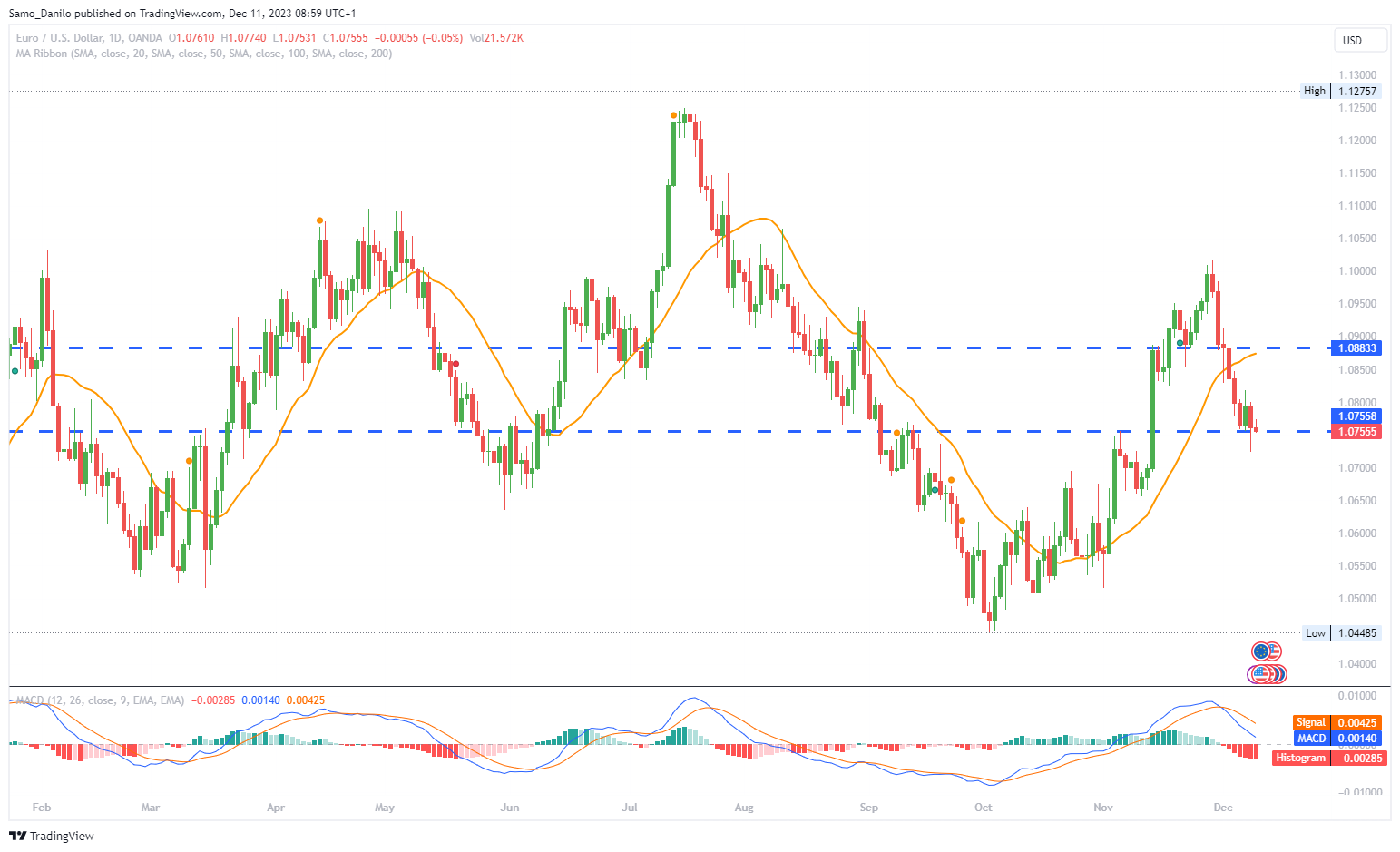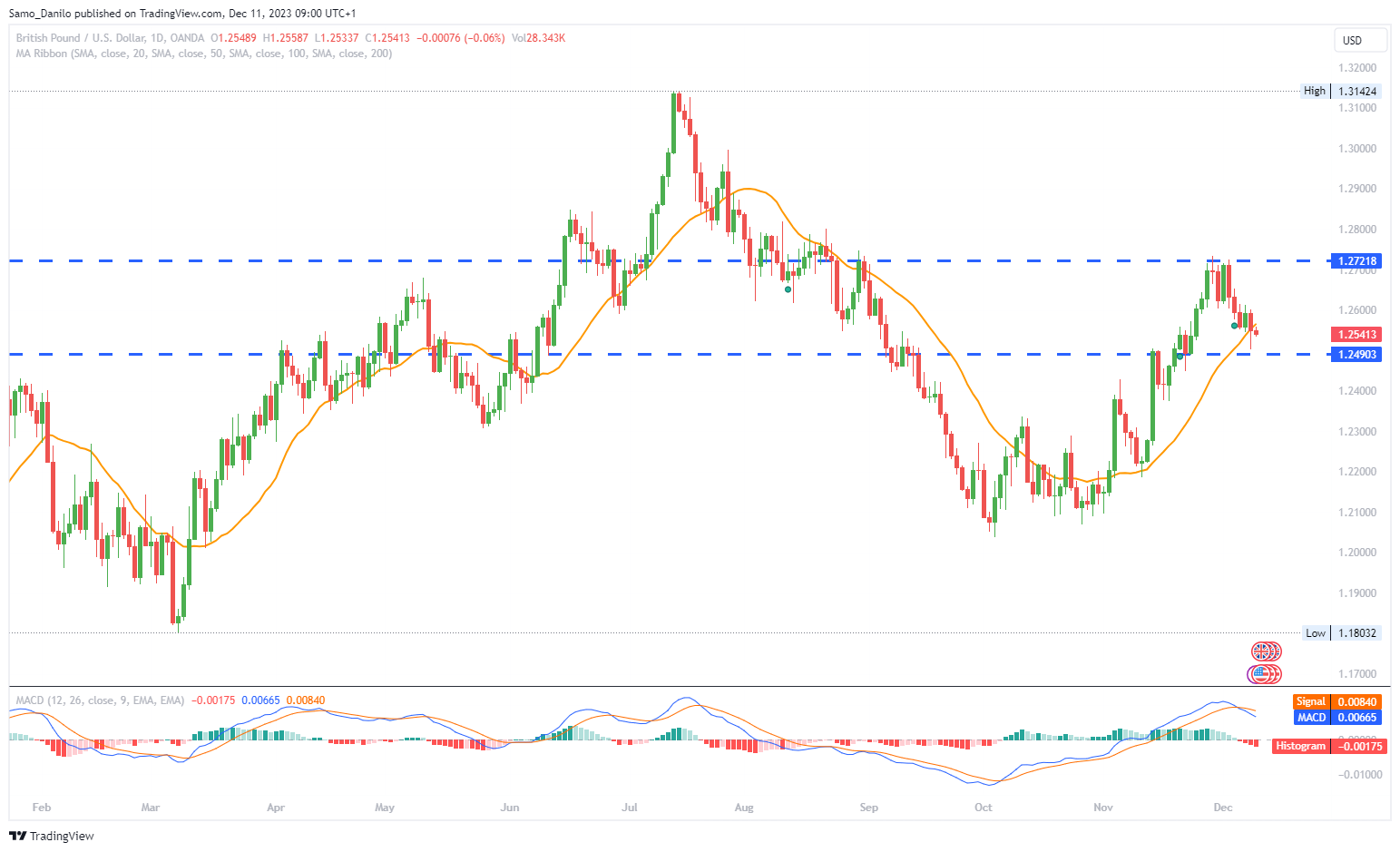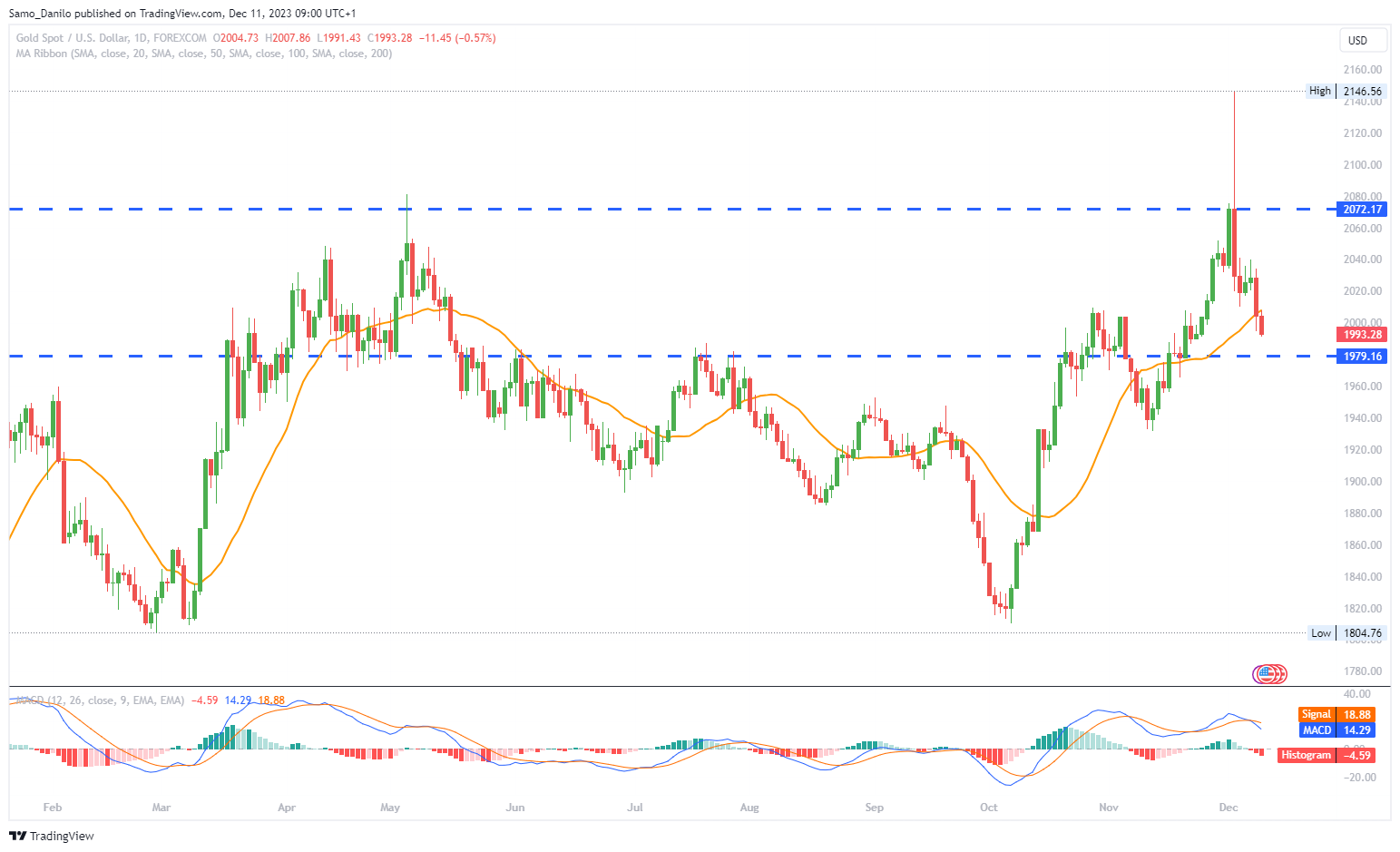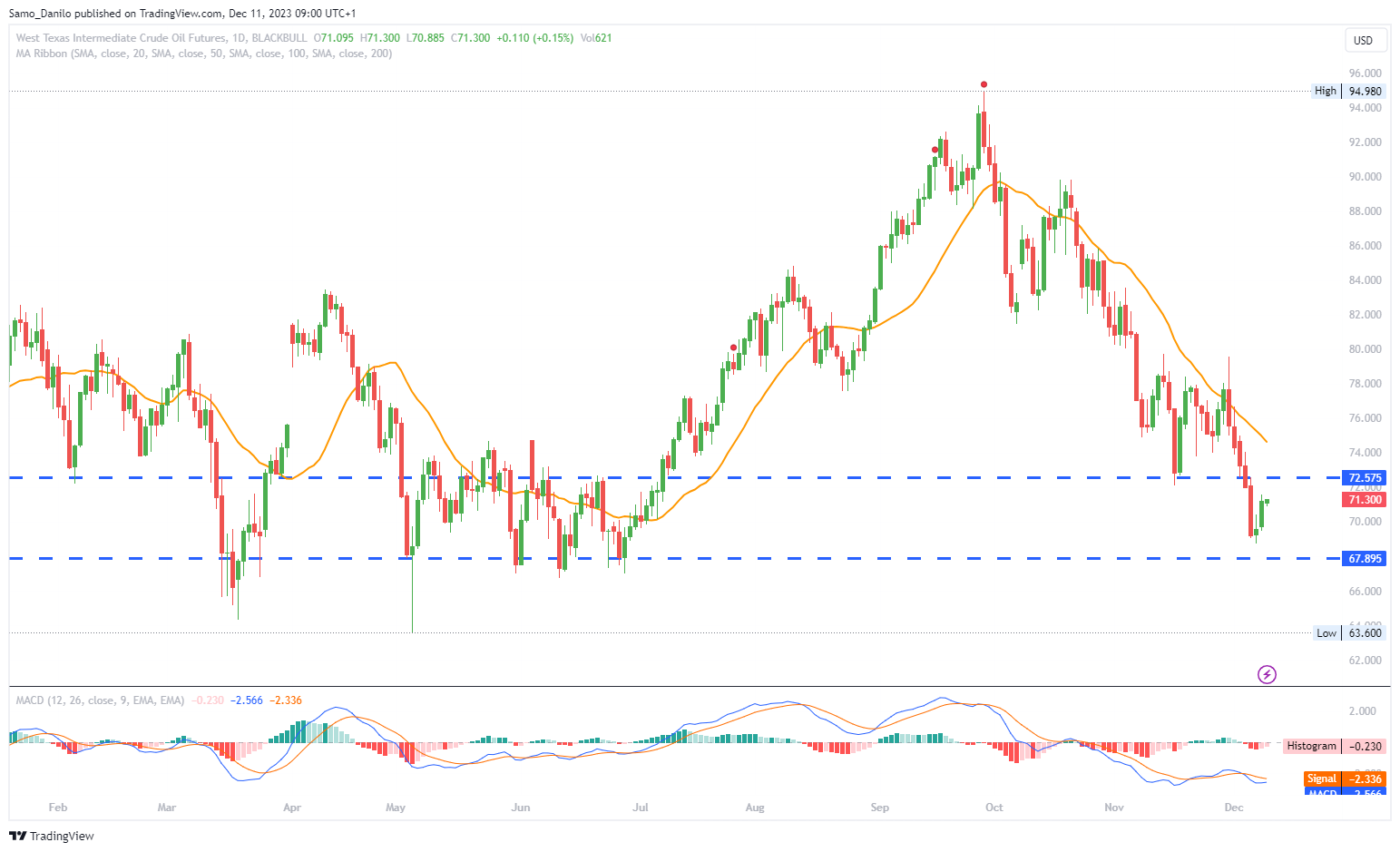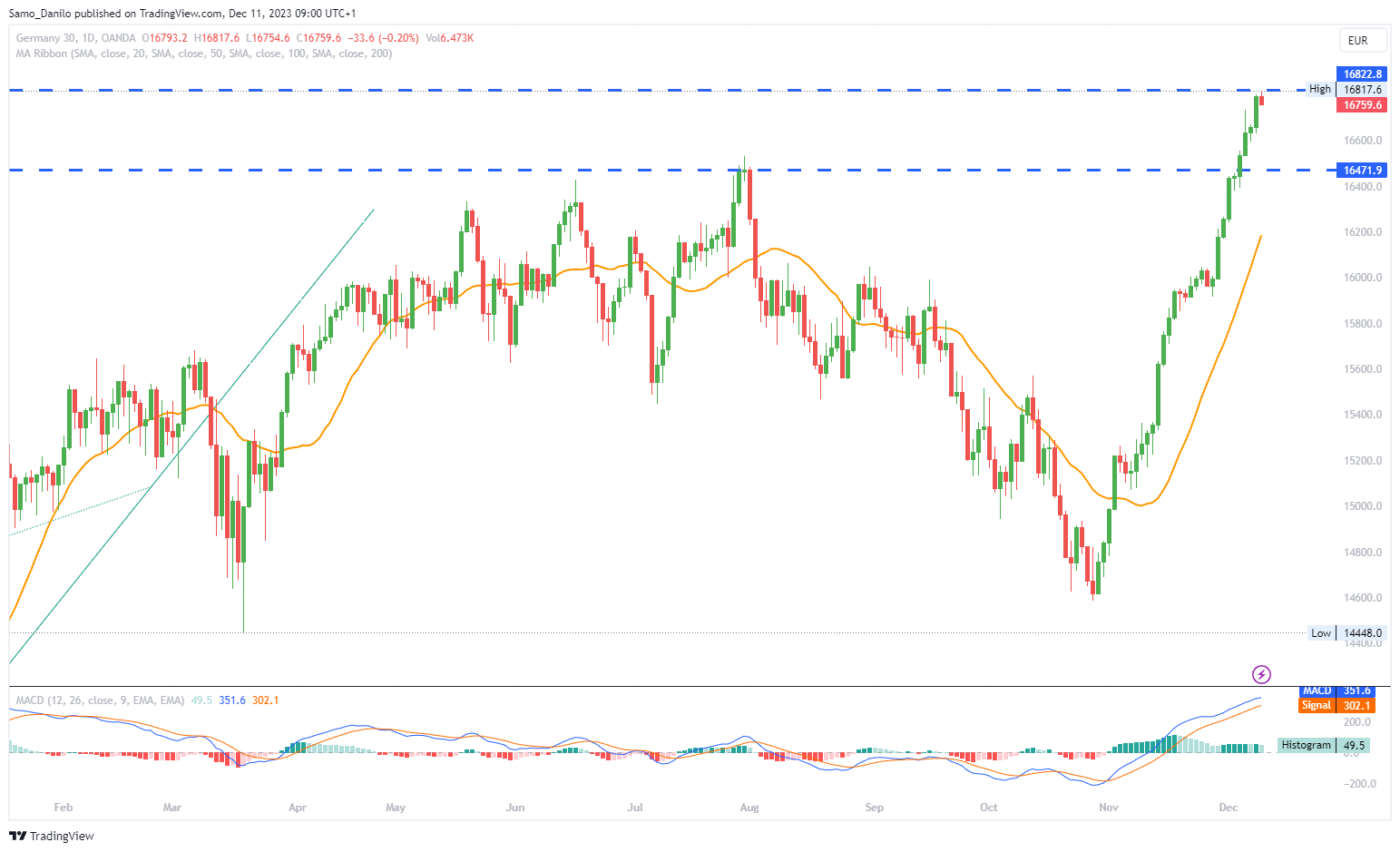EURUSD
- The US Dollar saw an upward trajectory during the week, with a brief slowdown on Thursday as market participants paused ahead of the US employment figures scheduled for Friday.
- The Euro, on the contrary, remained under pressure as economic uncertainties persisted. The EUR/USD retreated below the 1.0800 mark, marking a sharp decline for a second consecutive week.
- Recent European macroeconomic figures indicated a looming recession in the Eurozone. Growth-related indicators suggested ongoing economic contraction, raising concerns about the region's economic future.
- The EU reported a 1.2% year-on-year decline in Retail Sales for October. Additionally, the annualized Gross Domestic Product (GDP) was downwardly revised to 0.0% in Q3, signaling economic challenges.
- The aggressive monetary tightening, now paused, has left its mark on economic progress. The full repercussions of this policy shift are yet to be fully realized.
Closing statement: The week witnessed a stronger US Dollar as markets awaited key employment figures. Meanwhile, the Euro struggled, retreating against the dollar for the second consecutive week. Concerns over Eurozone economic contraction were evident in weak Retail Sales and GDP figures, highlighting the impact of the recent monetary tightening pause. The coming weeks will likely be crucial in assessing the longer-term effects on both currencies.
GBPUSD
- GBP/USD maintained a steady position near the 1.2550 level, exhibiting a lack of a clear directional bias during the European morning on Monday.
- The pair faced a struggle as investors exercised caution in anticipation of crucial economic data releases and central bank meetings scheduled in both the US and the UK throughout the week.
- The US Nonfarm Payrolls report for November surpassed market expectations, revealing the addition of 199,000 new jobs to the US economy.
- Bank of England (BoE) Governor Andrew Bailey emphasized that it was too early to consider rate cuts. Despite a decline in the Consumer Price Index from 6.7% in September to 4.6% in October, Bailey warned against complacency on inflation.
- US Federal Reserve (Fed) Chair Jerome Powell, in comments earlier in the month, suggested that it would be premature to confidently assert that the Fed had achieved a sufficiently restrictive stance to curb inflation.
| SMA (20) | Rising |
|
|
| RSI (14) | Falling |
|
|
| MACD (12, 26, 9) | Slightly Falling |
|
Closing statement: GBP/USD navigated a week marked by cautious trading and key economic events. Strong US employment figures contrasted with the Bank of England's Governor's stance against premature rate cuts, adding complexity to the currency pair's dynamics. As both central banks grapple with inflation and economic data, GBP/USD faces uncertainties in the near term.
GOLD
- Gold prices experienced continued selling pressure for the second consecutive day on Monday, hovering around the $2000 mark.
- Investors approached the week with caution due to significant event risks for Gold, including the release of the US Consumer Price Index (CPI), the Federal Reserve (Fed) interest rate decision, and updated projections.
- Gold encountered selling pressure attributed to the underlying strength of the US Dollar. The cautious risk sentiment, influenced by concerns about China's deflation and ongoing geopolitical tensions with Yemeni Houthis, contributed to this trend.
- China's Consumer Price Index (CPI) experienced its fastest decline in three years in November, accompanied by deepening factory-gate deflation. These indicators hinted at increasing deflationary pressures and challenges to economic recovery.
- The interplay of risk trends, expectations related to the Federal Reserve's decisions, and dynamics in the US Dollar are expected to be the primary drivers influencing gold prices in the coming days.
| SMA (20) | Rising |
|
|
| RSI (14) | Slightly Falling |
| |
| MACD (12, 26, 9) | Slightly Falling |
|
Closing statement: Gold faced sustained selling pressure amid cautious investor sentiment influenced by global economic concerns. The week ahead is crucial for Gold, with the focus on key economic indicators, the Federal Reserve's decisions, and broader risk dynamics. As uncertainties persist, Gold's price trajectory will be closely tied to developments in the US Dollar and risk sentiment.
CRUDE OIL
- West Texas Intermediate (WTI) Crude Oil prices edged higher during the Asian session on Monday, attempting to build on last week's modest recovery from the $69.00/barrel mark, the lowest level since June 29.
- The strong US Nonfarm Payrolls (NFP) data released on Friday contributed to optimism regarding the resilience of the US economy. This optimism, in turn, supported expectations for continued crude demand in the world's largest fuel consumer.
- Despite positive economic indicators, investors remained skeptical about whether the recent production cuts announced by OPEC+ would be sufficient to counteract rising supply from non-OPEC+ countries and the overall weakening global demand.
- China's General Administration of Customs reported a 10% decline in crude imports from October, reaching a four-month low in November.
- Additionally, inflation data from China indicated the fastest drop in consumer prices since November 2020, with the Producer Price Index (PPI) marking its 14th consecutive month of decline.
| SMA (20) | Falling |
|
|
| RSI (14) | Slightly Rising |
| |
| MACD (12, 26, 9) | Slightly Falling |
|
Closing statement: WTI Crude Oil prices witnessed a modest recovery amid optimism fuelled by strong US economic indicators, particularly the robust Nonfarm Payrolls (NFP) data. However, scepticism prevails regarding the effectiveness of OPEC+ production cuts in the face of broader global supply dynamics and weakening demand. The impact of China's economic indicators, notably declining crude imports and inflation trends, adds an additional layer of uncertainty to the crude oil market.
DAX
- On Friday, German economic indicators provided early support to the DAX. The finalized Consumer Price Index (CPI) Report from Germany confirmed the preliminary numbers, revealing a softening in the German annual inflation rate from 3.8% to 3.2% in November.
- The DAX received late support from the US Jobs Report and consumer sentiment. Recent labor market statistics from the US raised concerns, with JOLTs job openings and ADP Employment numbers contributing to the belief in a potential March Fed rate cut to prevent a hard landing.
- Recent commentary from the European Central Bank (ECB) aligned with rising expectations of a less hawkish ECB interest rate trajectory. ECB hawk Isabel Schnabel's remarks on December 5 suggested that further rate hikes were unlikely, contributing to the dovish sentiment.
- In the week ahead, ECB commentary will be a focal point for investors. ECB Executive Board member Elizabeth McCaul is scheduled to speak on Monday, adding to the anticipation around central bank perspectives.
- The short term trends for the DAX are expected to be influenced by crucial events, including the US Consumer Price Index (CPI) Report on Tuesday, the Federal Reserve's economic projections and press conference on Wednesday, and the ECB press conference on Thursday.
| SMA (20) | Rising |
|
|
| RSI (14) | Rising |
|
|
| MACD (12, 26, 9) | Rising |
|
|
Closing statement: The DAX experienced a mix of support from German economic indicators, late backing from US reports, and the dovish stance of the ECB. The upcoming week will likely see continued attention on central bank commentary and key economic indicators, particularly the US CPI Report and the events surrounding the Federal Reserve and ECB press conferences.
